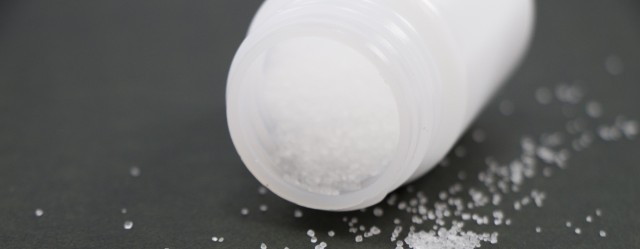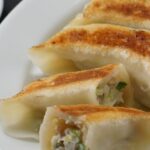
The Consumer Affairs Agency started to invite comments (public comments) on “the guideline draft of additive labeling for use of ‘non-use’”on December 22, 2021. Since there are some changes in “Type items (draft) of non-use labeling of food additives that may cause misunderstandings” (discussion about the guideline of additive labeling for use of non-use) announced on November 18, 2021, I would like to organize them here.
Background of comment invitation
Firstly, here are the quotes from “objective of comment invitation” for a reconfirmation of the process that led to the formulation of the guidelines.
- Article 9 of the Food Labeling Standard prohibits the use of words that contradict terms to be written on labeling or characters that mislead about contents, and the Food Labeling Standards Q&A indicates the interpretation of the article, but it does not show a comprehensive interpretation of the article’s regulations.
- Food Labeling Standards Q&A indicating the labeling methods of “not added” for additives is ambiguous.
- In some cases, labeling “not added” is more prominent in a primary display panel of a product than mandatory labeling items, and collective labeling frame, which should be seen, is not utilized. In light of the current situation, it was proposed that a new guideline be formulated to serve as a as a marker for whether a food additive is a prohibited labeling item stipulated in Article 9 of Food Labeling Standards or not.
Changes from the draft of the previous discussion (Nov. 18, 2021)
The main changes from the type items(draft) are as follows.
- Consolidate indications that is considered highly likely to fall under the category of prohibited labeling items stipulated in Article 9 of Food Labeling Standards.
(Deletion of “Indications that labeling that does not immediately fall under the provisions of Article 9, but may cause misunderstandings by consumers”)- Reorganization of the 11 type items into 10 type items by merging the former items (4) and (10).
The other changes are minor, such as modifying expressions and making examples more specific.
Indications that is considered highly likely to fall under the category of prohibited labeling items
In terms of “not added”, “non-use” labeling of food additives, the following 10 type items are indicated as “Indications that is considered highly likely to fall under the category of prohibited labeling items”. (Wording revised from the proposed type items are indicated in red)
| Type item 1 | Mere “not added” labeling e.g. labeling mere “not added” (labeling mere “no added” without indicating the object is unclear what is not added.) |
|---|---|
| Type item 2 | Terms not stipulated in Food Labeling Standards e.g. Using terms such as “no artificial sweeteners used”,etc. artificial, synthetic, chemical seasonings, natural, etc. |
| Type item 3 | Labeling on foods with use of additives not permitted by the regulation e.g.1 Soft drink labeled “no sorbic acid used” * * Use of sorbic acid in soft drinks violates standards for use e.g.2 Food with a name specified in Appended Table 5 of Food Labeling Standards, when a specific additive is used, labeling as “not added”or “non-use” of additives that fall outside the definition of Schedule 3 of the Act |
| Type item 4 | Labeling on foods with food additives having same function / similar function e.g.1 Labeling “no preservatives used” on foods with food additives other than preservatives for enhancing shelf life. e.g.2 Labeling “no synthetic colouring used” on foods with coulouring in natural colouring |
| Type item 5 | Labeling on foods with ingredients having same function / similar function e.g. 1 Labeling “no chemical seasonings used ” on foods with extracts containing amino acids as ingredients. e.g. 2 Labeling ” No emulsifier used” on foods made from highly processed ingredients with emulsifying properties (In the case where “non-use” labeling is present and indications of ingredients with the same function / similar function is not present, there is a risk of misleading about the content as consumers may misunderstand that the function of the food is due to the function of another food.) |
| Type item 6 | Labeling associating with health and safety e.g. 1 Labeling “not added ” or “non-use” for being good for health. e.g. 2 Labeling “not added ” or “non-use” for being safe. |
| Type item 7 | Labeling associating with something other than health and safety e.g. 1 Labeling “not added ” or “non-use” for good tastes. e.g. 2 Labeling “no preservatives used, please consume as soon as possible” No indication of “after opening the package” gives an impression that the food must be consumed earlier than its best before date. e.g. 3 Labeling ” no Colouring used ” as the reason for the possibility of discoloration of the product |
| Type item 8 | Labeling on foods with use of additives not expected e.g. 1 Labeling ” no Colouring used” on food usually sold with its original colour. e.g. 2 Labeling “non-use of the additive” on foods of which use of the certain additive is uncommon among similar products and of which use of it is not expected by consumers (as an example of consumers not expecting use of the additive, -use of preservatives in mineral water -use of colouring in mineral water ,etc.) |
| Type item 9 | Labeling on food with a processing aid or carry-over (or cannot be confirmed not to be used) e.g. 1 Labeling ” no preservatives used” on a final product with a part of ingredients used containing preservative e.g. 2 Labeling “notadded” or “non-use” with the indication that the verification of labeling is based only on the manufacturing process of the product manufacturer because the whole manufacturing process of each ingredient cannot be confirmed. (As for labeling of food additives, confirmation of manufacturing and processing processes is needed. There is a risk of misleading of the content if the labeling, which is even indication outside the collective labeling frame, is not based on the results of verification. ) |
| Type item 10 | Excessive claims e.g. 1 Labeling “non-use of XX” in prominent colour on many places of a package of a product e.g. 2 Labeling “not dded” in a big font beside “preservative, colouring” in a small size on foods with additives other than preservative and colouring used. |
Regarding the review of labeling
This guideline draft includes the period of time needed for reviewing of labeling.
- The transitional period would not be needed legally speaking since new specification to Article 9 is not needed to be added.
- However, due to reasons such as ambiguity in Food Labeling Standards Q&A, which indicates the interpretation of Article 9, there is a possibility that labeling that is considered highly likely to fall under the prohibited items is being used.
- Labeling must be reviewed for two years (until the end of March 2024).
The deadline of receiving comments is January 21, 2022. After revisions based on the results of the invitation of comments, the guidelines are expected to be announced as official guidelines by March 2022. Some revisions of related Food Labeling Standards and Fair Competition Code are expected in the future, but it would be easier to judge if reviewing your labels is necessary or not only with this guideline draft. Even though the related “non-use” labeling is not used on your product, looking through the related notifications would be helpful for considering labeling of food additives.
Reference
Share/Like/Follow:
Newsletter Signup
We issue monthly e-newsletters, which provide you with the latest updates on food labeling/regulations in Japan.
If you want to make sure to not miss any issue, please click below.
Related Service
Research Services on Ingredients & Food Labeling -For the Japanese Market-
We verify the conformity of ingredients and additives with the standards for use in Japan based on specifications such as formulation lists. We also verify the conformity of the proposed labeling of ingredient names, nutrients, etc. with the labeling standards based on specifications such as formulation lists.

Label bank Co., Ltd. CEO (Founder)
Born in Japan. Working on solving various issues related to food labeling operations. Also regularly gives lectures for various organizations in Japan.
Co-author of ‘Latest edition: Guide book Food Labeling Law and related business practical points – from scratch (Japanese version only)’ (DAI-ICHI HOKI CO., LTD/2019).



